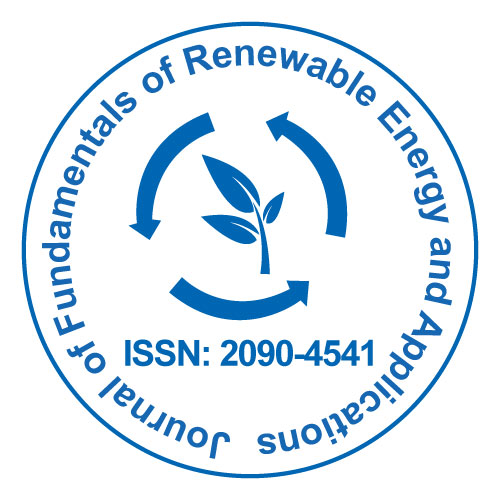
Journal of Fundamentals of Renewable Energy and Applications
Open Access
ISSN: 2090-4541

ISSN: 2090-4541
Frank Ulrich Ruckert, Daniel Lehser Pfeffermann, Tobias Muller and Franz Joos
Saarland University of Applied Sciences, Germany
University of Applied Sciences, W�?�?�?¼rzburg-Schweinfurt, Germany
Helmut Schimdt University, Germany
Scientific Tracks Abstracts: J Fundam Renewable Energy Appl
Over the past few years, the University of Applied Sciences in Saarbr�?�?�?¼cken (htw saar) has carried out intensive research into small scale wind turbines, known as vertical axis wind turbine (VAWT). The well-known problem with the design of these types is that they did not start to run automatically. The VAWT must be electrically driven to start, which is due to design problems. The reason was identified by our team with numerical simulations of detachment behaviour at the blades. However, this can only be clarified by means of detailed measurement. In order to compare simulations, and investigate turbines behaviour more deeply, a new wind tunnel was constructed from scratch at htw saar. The so- called G�?�?�?¶ttinger design was chosen as type of construction, which means that air circulates inside. Dimensions of the tunnel are 12 m x 3.5 m x 2 m. Air is driven by a 7 kW rotor placed on upper side. Its nozzle diameter is about 1.6 x 1.6 meter. The VAWT can be placed in this position. Access points are positioned for temperature, pressure and velocity flow examinations. An additional heat absorber is used to control the air temperature. Two windows positioned inside the nozzle chamber can be used to visualize turbulence effects and enable the qualitative measurement of the spatial position and strength of compressible air vortices with a highspeed camera. There is currently no alternative test rig know for these kind of experiments. Thus, qualitative and quantitative behaviour of the VAWT can be examined. The investigation in the transonic wind tunnel, as well as the adjustment with simulations of the VAWT will be used for validation and further design development.
Frank Ulrich Rückert has studied Process Engineering and received his PhD from University of Stuttgart in the field of combustion technology. He worked for over 12 years at Robert Bosch GmbH in pre-development, advanced design and computational fluid dynamics. In 2016 he got his professorship call for Fluid Energy Machines from Saarland University of Applied Sciences, Germany. He holds over 45 patents and has written several international publications.